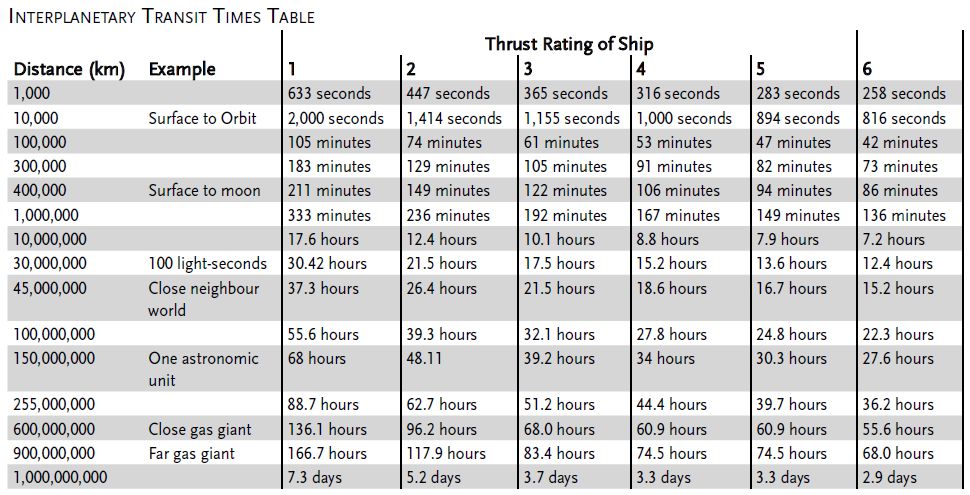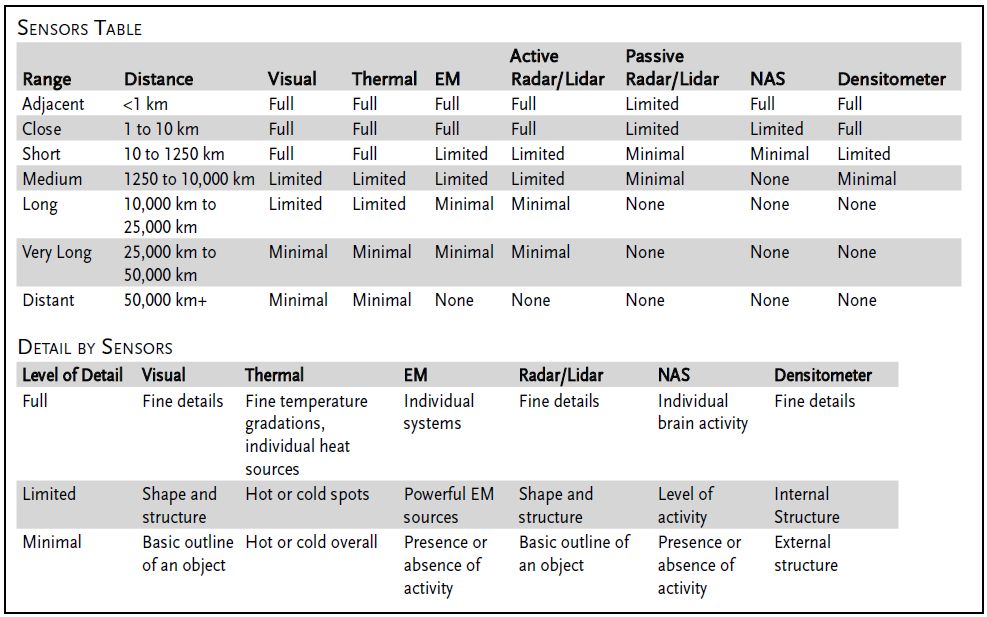Sector Control
The Travellers Have Turned Pirate – Can They Get Away With It?
It’s happened in my Traveller game, and it was probably inevitable given the insurrectionist campaign I’m running. The player characters are wanted by the Imperial authorities. If you’ve run a science-fiction game for long it’s probably happened to you. They’ve done something and the law noticed.
But with travel and communication times being what they are, it seems possible that the players may be able to avoid the law as they jump from sector to sector. So the million-credit question for the referee is “How likely are they to get caught?”
As a storyteller my proper first answer is, “Whatever makes the story fun.” But since this is Traveller part of the fun is getting into some of the “crunchy” details. The added bonus of this is that it can help keep your space game feeling realistic, which is important to many players. The Traveller core book and High Guard don’t illuminate this topic much, which has lead me to sketch out some ideas regarding how space is controlled by government authorities in my Traveller universe, and specifically in the border region known as the Skein Reach.
Below I will lay out some of the challenges of exerting government control in the vastness of space and the strategies used by the authorities to overcome those difficulties. There are lots of adventure ideas to infer, and some seeds are listed in the conclusion.
Although the details below are from the Mongoose version of Traveller, these ideas could as easily apply to a game of Rogue Trader, Star Wars, Star Trek, GURPS, Star Frontiers, or any other sci-fi system that lacks widespread FTL communications.
Travel Times
“Are we there yet?”
In a universe where space travel can take days or weeks to jump a single parsec, or even just to cross a star system from planet to planet, government forces determined to catch all criminals would need to have a presence everywhere.

In a system like Sol, it would take around 6 days at 1G thrust to get from the Earth to a gas giant for refueling.
Even the Fifth Holy Empire of Humanity doesn’t have unlimited resources, so actual forces tend to be concentrated at populated planets and starports. System defense vessels, police cutters, and wings of fighters stand ready to defend settlements. Small defense stations are placed in orbit around gas giants or at important jump points to ensure that merchants can refuel and conduct their business free from interference by pirates. Scout fleets led by patrol cruisers, fleet pickets, and Imperial Star Corvettes patrol the small star lanes. Massive capital ships make an intimidating show of force along the major trade routes in Imperial territory.
However, those long travel times mean that even within a heavily defended star system some enterprising pirates could lie in wait, attack a ship, and jump away long before any response can reach them.
Even communications can take a long time. At light speed a radio message from a far gas giant could take an hour or more to reach a friendly contact. Pirates could easily be gone before anyone knew that an attack had occurred.
Which raises another question – how do the authorities even know what’s going on out there away from their facilities?
Patrols and Reconnaissance Drones
The obvious first answer is patrols. One of the most common ship designs in the universe is the Type S Imperial Scout, and patrols of these ships act as the synapses of the Imperial intelligence network. But even when they are in the same star system with a pirate vessel how much can they know?
Beyond 50,000 km ships appear as an outline, allowing probable identification of known hull types. Two ships orbiting the same gas giant might be little more than sensor blips to each other. If a criminal vessel were spoofing or not using any type of radio self-identification system a government vessel would have to be very close to positively identify a ship. A patrol might be in the same system with a bevy of wanted criminals and have no way of knowing who they are. Ships that refuse to answer hails from the authorities would obviously be cause for suspicion, but at a great enough distance such a ship could likely slip away before being interdicted.
Furthermore, in sparsely inhabited regions like the Skein Reach, patrol ships are often simply not in system most of the time.
The solution for the Imperial Scout Service has been to use networks of recon drones to extend their sight. Recon drones have sensors and can be used as communication relays. For remote areas that they want to watch Imperial protocol is to deploy a network of recon drones around the star system. Some might be left in high orbit around a gas giant, in a standalone solar orbit, or out near the Oort cloud – places where they will be hard to find and disable. They are configured to watch nearby space and communicate their findings with each other, creating a resilient network of electronic Imperial eyes. Regular patrols of scout vessels can then fly though a system, collect data from the network of spy satellites, and refuel, repair, or replace any as required. A months-long route to service satellites on a loop of isolated star lanes is a common mission for scouts.
These networks are of little value in terms of catching pirates in the act, but of great value in identifying activity that takes place in a system while no one is present to see. Details of an attack, including visual records and energy signatures from weapons or jump drives can be captured by these tiny sentinels. The likely jump destination of a wanted pirate might be recorded, leading motivated pursuers in the right direction. Bounties can be posted based on the data collected. The rule of law is extended.
Bounties and Notices
How fast does word of misdeed spread? Mail is sent by ship, and Imperial xboats travel at jump 4, so word of their crimes is going to catch up with the characters eventually.
In the Skein Reach bounty notices are a part of com-net traffic, which are usually provided along with the rest of the most recent com-net update as part of a starport’s docking fee. They’re essentially public information provided to anyone who has a ship. Bounties will include information about the crime in question and whatever details are available to identify the perpetrators. This might be a call sign, video of the crime, or even a close-up grav scan of the ship and crew. It all depends on what evidence the authorities have in their possession.
Many bounties are dead ends. Most are collected long after the crime is committed. And almost all of them are ultimately paid for by the government or space ship insurance companies.
Garrisons and Fleets
There are many more ships at the government’s disposal than the humble type S. From fighters to enormous battleships, they build them all. Each system has its own defenses as well, which need to be considered into the mix.
Escorts and Patrol Cruisers are roaming elements in the Skein Reach, conducting official business for the planetary governments. Most of these would be sufficient to challenge the average pirate ship. If needed, an anti-piracy fleet could be called up, with a flagship and enough elements to find and destroy whatever persistent or militarily important enemies arose.
In my game, the players’ raid on an Imperial starbase has inspired the Imperial border governor to assemble the 329th Imperial Advance Squadron led by a cruiser, the ISS Adamantite, commanded by Captain Tig Hauer. The Adamantite is assisted by three corvettes, the ISS Vanguard, Watchful, and Cutting. They are accompanied by six type-s scouts, the ISS Silence, Inquiry, Frontrunner, Needle, Quicksilver, Spark. They are searching the sector for the travellers and any rogue droids that they have liberated.
Adventure Seeds
Here are just a few ideas to work these themes into your sci-fi RPG.
- The Travellers, who work for a governmental or corporate navy, are assigned to a patrol route deploying or collecting data from a network of probe drones. In the logs that they collect the crew sees evidence of pirate, rebel, or rival activity, leading them to their next adventure.
- The Travellers are planning a big heist, but in order to get away clean they must also neutralize or evade the network of probe drones in the system.
- The Travellers come across a damaged probe drone in space. Data on the drone shows unusual activity in the system at a remote planetoid where unidentified ships, anomalous energy readings, or previously unknown settlements are.
Posted in Traveller by Adam A. Thompson with 2 comments.

Leave a Reply